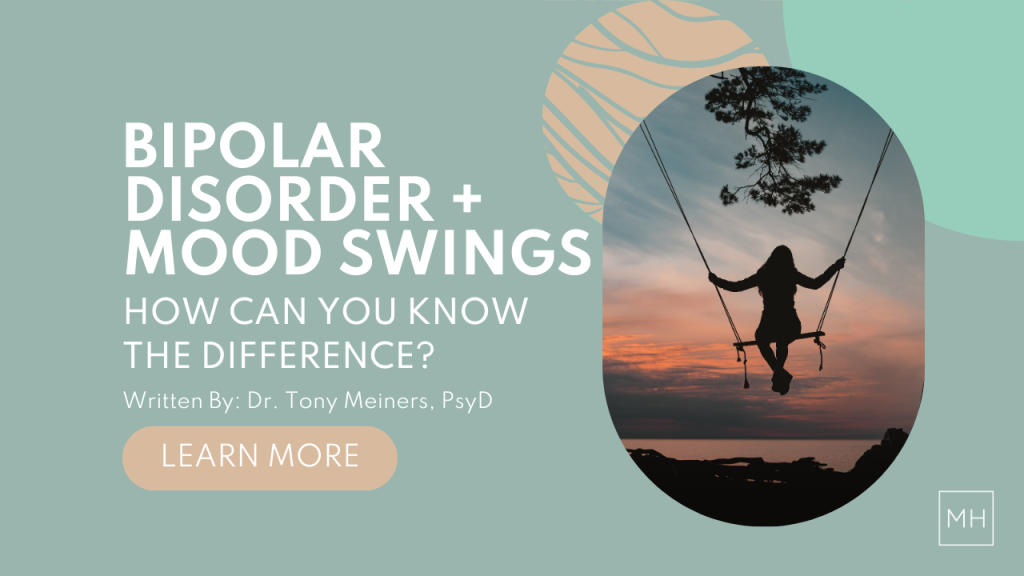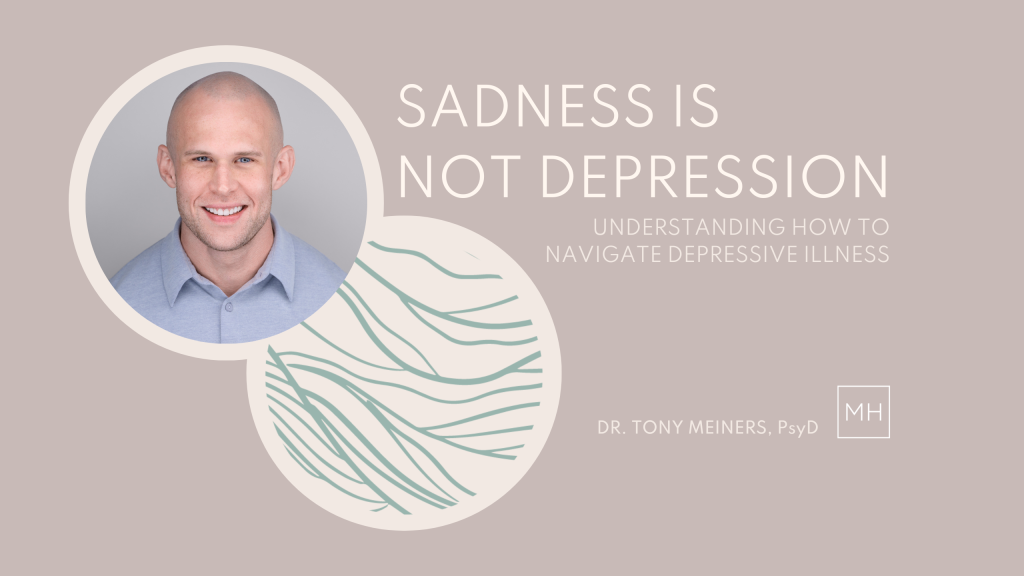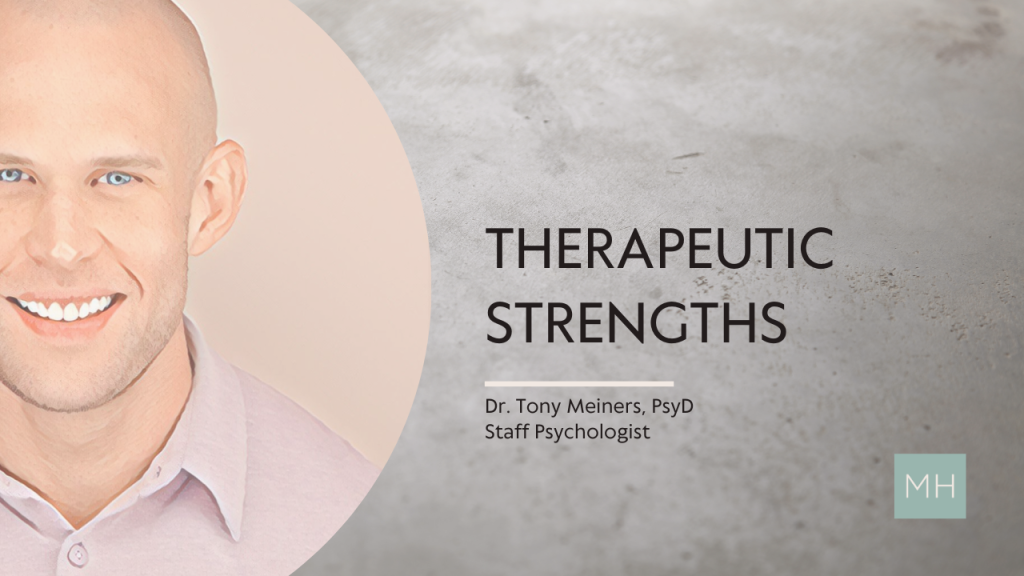BIPOLAR DISORDER + MOOD SWINGS :: HOW CAN YOU KNOW THE DIFFERENCE?
Some legitimate mental health disorders have become layman’s terms and thrown around to describe traits and expressions of people. Bipolar disorder is one that is often uttered when someone sees emotional mood swings in an individual. Emotional ups and downs are not the same things as bipolar disorder. It is important to know the difference between normal emotional dysregulation/fluctuation and a legitimate diagnosis of bipolar disorder.
MOOD SWINGS OR BIPOLAR DISORDER
A mood swing is simply a response to a perceived stimulus. Changes from happiness to sadness to anger can happen for any number of reasons throughout the day. Emotional dysregulation does not automatically mean a diagnosis is warranted. Bipolar disorder presents with much more complexity and severity. Bipolar disorder includes days or weeks of a continued mood state that is not explained by everyday reactions to normal events. It presents with extreme highs and extreme lows in a cyclical pattern that is not solely dependent on external stimuli.
WHAT IS BIPOLAR DISORDER?
Bipolar disorder represents an episodic disorder in which individuals alternate between two or more mood states. It involves a two-step process of first identifying mood episodes (mania, hypomanic, major depressive disorder) and then diagnosing the disorder. Bipolar disorder comes in two separate diagnoses:
- Bipolar 1 disorder: the occurrence of at least one manic episode and is usually (but not always) followed by another mood episode.
- Bipolar 2 disorder: the occurrence of at least one major depressive episode and at least one hypomanic episode. Bipolar 2 requires that there is no presence of a manic episode ever. Bipolar mood episodes also last for several days/weeks at a time and do not rapidly shift within a short time frame.
WHAT IS MANIA AND HYPOMANIA?
Mania is characterized by abnormally elevated/expansive/irritable mood, as well as increased goal-directed activity or energy that lasts for at least one week and is present almost all of the time throughout that week. In addition, at least three of the following are present during that week: inflated self-esteem/grandiosity, decreased need for sleep, pressured speech, flight of ideas/racing thoughts, distractibility, increased goal-directed activity (in addition to hypersexuality), psychomotor agitation, and/or excessive involvement in activities that have a high likelihood of adverse consequences. Mania can cause a break from reality (psychosis) and sometimes requires hospitalization.
Hypomania, on the other hand, is a less severe experience of mania that is of a shorter duration. In hypomania, there is a period of elevated, expansive, or irritable mood, as well as increased activity or energy for at least four days with no psychotic symptoms or impairment.
COMPLEXITY OF BIPOLAR DISORDER
The field of psychology has long struggled with the early identification of bipolar disorder. There is a high rate of missed diagnosis of bipolar disorder and an average lag time of about five years from the time symptoms first present to the time an official diagnosis is made. This is in large part due to the complexity of bipolar disorder which operates on a spectrum and can mimic symptoms of other disorders. ADHD, personality disorders, conduct disorders, autism spectrum disorder, anxiety disorders, depressive disorders, and psychosis can sometimes mimic bipolar symptoms. Because of this, it is important to consider differential diagnoses when assessing bipolar disorder.
EUTHYMIC STATE
One helpful way to distinguish between bipolar disorder and other potential mental health disorders is to examine periods of euthymia. Euthymia is defined as when an individual’s mood functioning is within normal limits. Periods of euthymia help clinicians be able to pinpoint the beginning of a manic/hypomanic state. If individuals report rapid cycles between mood states without a clear period of euthymic state, they may be experiencing anxiety or another mental health disorder rather than a mood disorder.
Bipolar disorder can also present differently in children/adolescents than in adults. This can make early identification harder for clinicians. The most noticeable signs of bipolar disorder in children/adolescents are severe mood swings that differ from their baseline of usual mood swings.
CAUSES/RISK FACTORS
Researchers are still working to discover the causes of bipolar disorder, but it is believed to be a combination of genetic and environmental factors. Bipolar disorder has the highest concordance rates of any disorder, meaning that there is a strong genetic component that contributes to the development of bipolar disorders. The onset for most people is late teens to mid-twenties. Experience of trauma, medication, substances/alcohol, and stressful life events have also been known to trigger bipolar disorder in individuals who are already predisposed.
TREATING BIPOLAR DISORDER
Treatment of bipolar disorder requires long-term management. Psychopharmacological interventions are usually the first line of defense. Mood stabilizers, such as lithium and anticonvulsants, are used in order to promote increased regulation of mood changes. Because mood stabilizers may take several weeks for efficacy, antipsychotics are sometimes included as part of treatment for immediate relief from symptoms.
Several modalities of talk therapy have been proven to help with bipolar disorder treatment, as offered at The Mental Health Collective. Clinical research supports psychoeducation, cognitive-behavioral therapy (CBT), and family-focused therapy (FFT) as essential first steps in getting back to baseline.
PSYCHOEDUCATION
Psychoeducation seeks to empower individuals by increasing their knowledge of bipolar disorder. This aids in medication adherence, identifying and managing symptoms, and decreasing stressors through informed care. One primary barrier in treatment with bipolar disorder is the high rate of nonadherence to medication. Individuals sometimes report missing the “highs” of mania/hypomania, or they might report feeling “flat” in comparison to their previous baseline of extreme fluctuations in mood. Empowering individuals to adhere to medication treatment is crucial in helping individuals with bipolar disorder.
COGNITIVE-BEHAVIORAL THERAPY
CBT operates by helping individuals identify the connection between thoughts, feelings, and behaviors during affective episodes to increase their awareness of how distorted automatic thoughts can contribute to a lack of medication adherence, increased symptomatology, and maladaptive behaviors.
FAMILY-FOCUSED THERAPY
FFT operates on the premise that increased dysfunction in relationships and family can lead to increased stressors and more prominent symptomatic expression. By decreasing dysfunction in interpersonal relationships, an individual can better handle stress and avoid potentially triggering a mood episode.
It is important to note that bipolar disorder can present in a variety of ways and manifest differently in different people. Not everyone experiences all of the same symptoms, and potential differential diagnoses can make an official diagnosis hard at first glance. Talking to a professional in order to decide whether your symptoms meet the criteria is crucial. Early identification of bipolar disorder can help individuals find treatment quicker and interfere less with daily functioning over the course of their lives.
Written by: Dr. Tony Meiners, PsyD
DO YOU HAVE A QUESTION?
Send our team a message or call 888.717.9355


